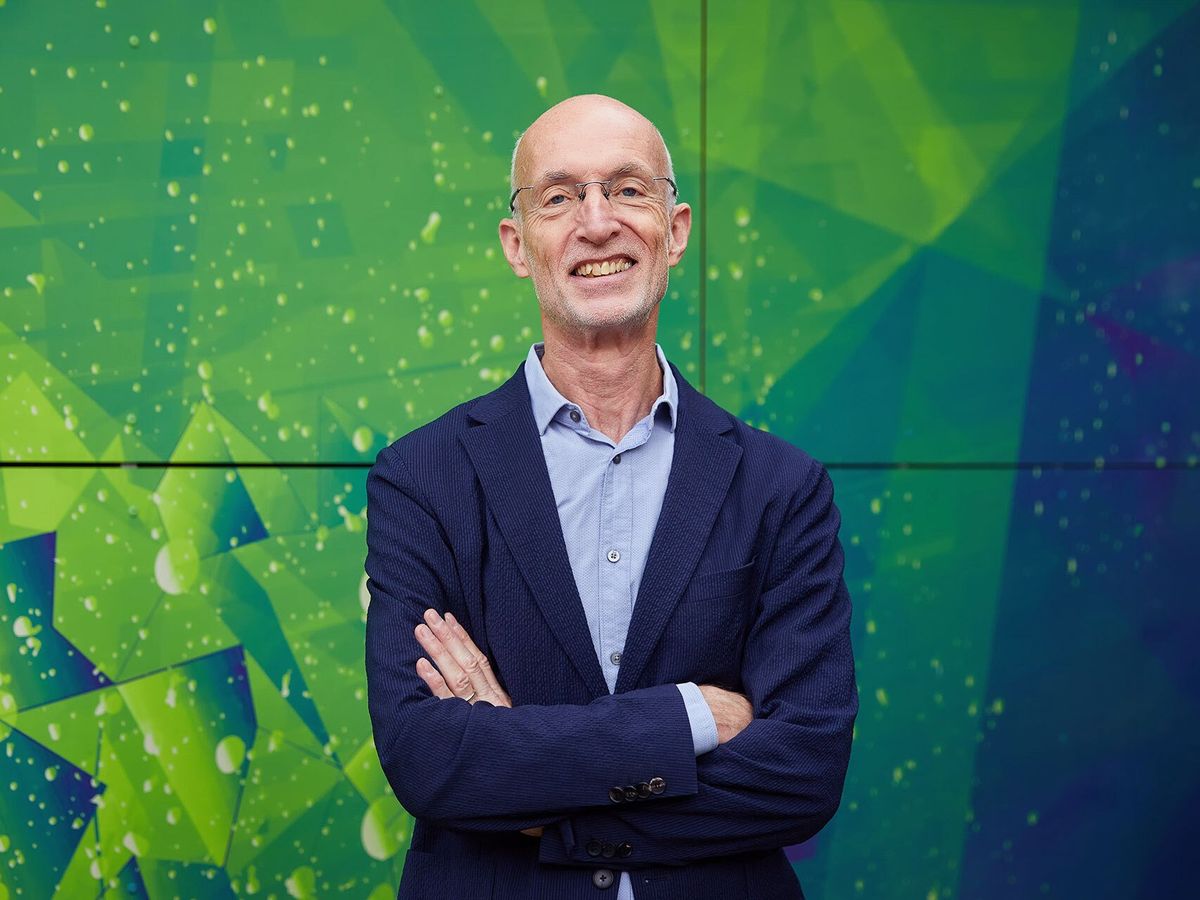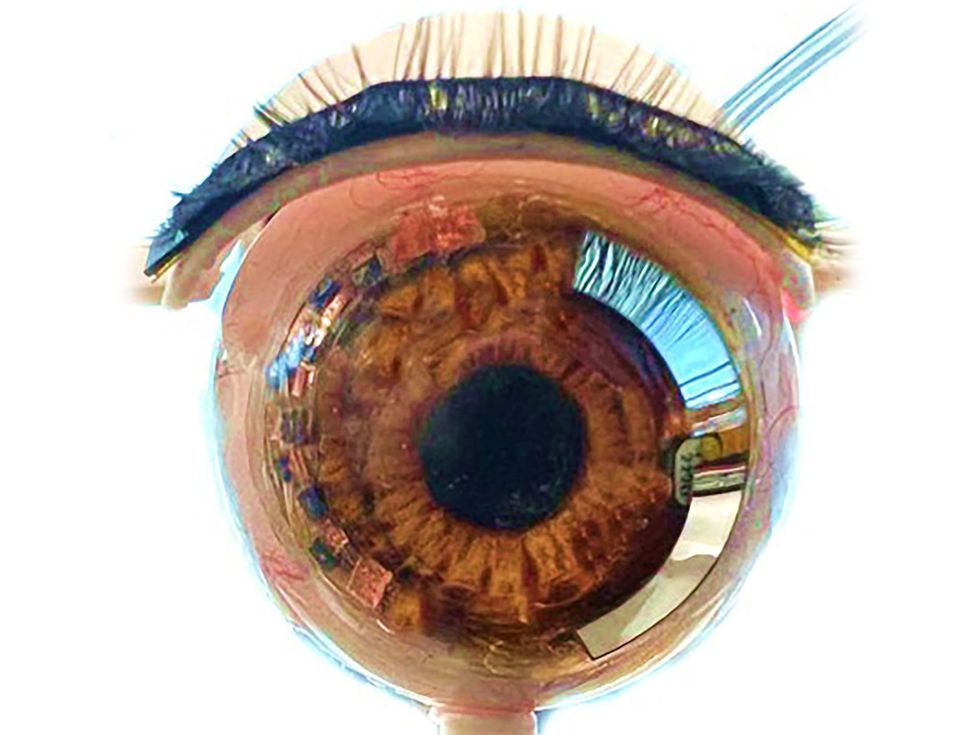
Invisibility cloaks—spots of impenetrable darkness that can conceal objects, making them undetectable to ordinary observers—are real, physicists have shown in recent years. Even stranger, researchers from Cornell University announced last year that they had successfully hidden not an object but an event in a “time cloak.” This week, scientists from Purdue University reported in the journal Nature that they’ve improved on that “temporal cloaking” technique in a way that might lead to real applications, such as securing data transmitted through optical fibers. The previous cloak hid a single event for just 50 trillionths of a second, long enough to obscure a single bit of data in a typical telecom transmission scheme. The new cloak was able to hide about 12 billion such events per second, making them invisible to an eavesdropper.
“Our work is, to my knowledge, the second experiment in the temporal cloaking field,” says Andrew Weiner, a professor of electrical and computer engineering at Purdue who helped conceive and then supervised the Purdue study. “In temporal cloaking, we’re still talking about the control of the flow of light. But rather than steering it around spatial objects, we’re steering it forward and backward in time so it doesn’t overlap with events that happen in time.”
It may seem like the experimenters are pulling a clever magic trick, but that trick is based on immutable laws of physics. Light carries information. It shines on objects, and our eyes perceive the details of these objects. If light were somehow bent around an object, that object would become invisible.
Light also has a special relationship to time: Since light has speed, the moment a beam of light illuminates an event, it indicates when the event happened. If an event can occur without light to reveal it, the event can go unrecorded. This is what happens with temporal cloaking.
In essence, the demonstration reported by Weiner and his students wasn’t very different from the one that preceded it a year ago: A beam of light was sent into an experimental system that had been rigged with fiber optics and coupled with a detector. Somewhere along the fiber-optic cable, a tiny dark hole—a time gap—formed within the beam and then quickly closed back up, as if there had been no interference in the light at all. Inside that time hole, an event—or a bit of data—could have slipped through unbeknownst to an onlooker.
But in the original Cornell experiment, the time hole had been created by pulsing one laser beam with a second laser, which transformed the first laser’s wavelength into a range of wavelengths, thus manipulating light with light. Then the beam entered a special section of the cable that carried one wavelength of the light faster than the other. A gap of darkness 1 centimeter long and lasting 50 picoseconds opened up right in the middle. Then the beam was reassembled when the light entered a section of the cable that reversed this effect, decompressing the beam as though nothing strange had happened.
The researchers used amplified femtosecond lasers and nonlinear optics to create the time hole in this first setup. But in the experiment reported this week, Weiner and his students manipulated the beam of light with a phase modulator, which is typically used in telecommunications to encode data onto an optical fiber. The modulator manipulated the light in the same way as in the Cornell experiment, opening a time gap that also lasted for tens of picoseconds. But since telecom modulators are capable of encoding billions of bits per second and require less power than femtosecond lasers, this newer system can generate cloaks much more rapidly—at a rate of 12.7 billion times a second. At that rate, you could hide 46 percent of a typical telecom transmission. That’s a considerable improvement over the previous rate of 40 000 times per second.
The new cloak isn’t perfect—for one thing, an eavesdropper could still potentially retrieve more than half the signal. But from a security standpoint, removing half the data is still valuable. However, according to Weiner, in theory they could hide more than 90 percent of the signal if they improved their system by utilizing better (and pricier) phase modulators.
Alessandro Farsi, a doctoral student in the laboratory of Alexander L. Gaeta and a member of the Cornell team that conducted the first demonstration of temporal cloaking, agrees that this new experiment overcame one major limitation of their group’s old setup. “What they managed to do is to have the gap open in a more repetitive way,” he says. “If you are able to take a continuous signal, as they do, and compress it into many little peaks, now you have a lot of empty space where things can happen and not interact with the signal, and you’ll be able to hide them.”
Farsi imagined a few other new applications for the technology, including labeling different data streams and hiding noise to improve a signal. “The techniques that have been developed for generating the cloaking are useful also for enhancing data,” he says. He can also see how this new method could be another step toward the coveted “spatio-temporal cloaking,” the combination of cloaking in space and time. “This application of a [temporal] cloaking could be brought back to spatial cloaking devices,” Farsi says. “Ideas cross-pollinate, and this is an interesting approach.”
Vladimir Shalaev, a professor of electrical and computer engineering also at Purdue, whose work focuses on spatial cloaking but who was not involved in the research, is likewise optimistic about the direction of the field. “What I learned is that every time you have beautiful physics, applications will come,” he says. “A year ago, lots of people—for good reason—had quite a bit of skepticism [about cloaking], and now there’s a very real piece of application,” he says.



